Palacio Gyeongbokgung (경복궁)
11.9Km 2025-05-13
Sajik-ro 161, Jongno-gu, Seúl
Gyeongbokgung fue el palacio principal durante la dinastía Joseon (1392-1910). Es uno de los cinco palacios de Seúl y ostenta 600 años de historia. Fue edificado en 1395 por el monarca que fundó la dinastía Joseon, Lee Seong-Gye, cuando trasladó la sede de la capital de la era Goryeo hasta Seúl. Al estar situado en la parte norte de Seúl, solía ser llamado también como “Palacio del Norte”.
El palacio Gyeongbokgung tiene 501.676 metros cuadrados de superficie, dispuestos en forma de rectángulo. En el lado sur se halla la entrada principal, Gwanghwamun. Al norte, Sinmumun; al este, Yeongchumun; y al oeste, Geonchunmun. Dentro del palacio se encuentran pabellones como Geunjeongjeon, Gyotaejeon, Jagyeongjeon, Gyeonghoeru y Hyangwonjeong.
Geunjeongjeon, la sala principal, era el lugar en donde se realizaban las ceremonias oficiales y los funcionarios rendían los informes matutinos ante el rey. Frente al patio interno, se encuentran trazados tres senderos de granito. El del medio, levemente más elevado, era el trayecto por donde caminaba el monarca y los de los lados eran para su Corte. En el patio se levantan a cada lado los pumgyeseok (estelas de piedra con los cargos de los funcionarios públicos).
Jagyeongjeon y Gyotaejeon eran las residencias de la madre del rey y la reina, respectivamente. Jagyeongjeon es famoso por su muro con flores y por su sipjangsaeng-gulttuk (bajorrelieve de la chimenea). La gulttuk tiene el reconocimiento de ser una de las chimeneas más bellas construidas durante el período Joseon y se encuentra en la lista de los Tesoros Nacionales.
Gyotaejeon eran los aposentos de la reina, y el muro y la entrada posterior, que dan al monte Amisan, son particularmente atractivos a la vista. Además de esto, lo que acentúa aún más la elegancia del palacio Gyeongbokgung son sus estanques de flores de loto, Gyeonghoeru y Hyangwonjeoung.
Gyeonghoeru era el lugar en donde se reunían los dignatarios extranjeros y en donde se celebraban fiestas especiales cuando ocurrían buenos acontecimientos en la nación.
Hyangwonjeong es un espacio dentro del patio posterior, que se halla detrás de los aposentos. Al igual que Gyeonghoeru tiene un estanque de flores de loto; pero a diferencia del mismo, posee características distintivamente femeninas. Su arquitectura aprovecha muy bien la geografía de los alrededores del monte Amisan y toda el área se funde en una gran belleza, un ejemplo perfecto de la estructura tradicional de los palacios coreanos.
Asimismo, dentro de Gyeongbokgung hay una biblioteca, Sujeongjeon, en donde los funcionarios tenían largas horas de lectura y el Sajeongjeon, la oficina de trabajo del rey. Además, hay numerosas reliquias históricas designadas como patrimonios culturales. Muchas de ellas fueron traídas desde todos los lugares de la nación, y se pueden mencionar, como ejemplo, la torre de piedra de 10 pisos del templo Gyeongcheonsa, la torre Jigwangguksa-Hyeonmo del templo Beomcheonsa, el reloj Cheonsang de Borugak y el reloj de agua de Heumgyeonggak, entre otras.
En 1910, cuando se firmó el Tratado de Corea y Japón, los japoneses, tras ocupar la península, tiraron abajo todos los pabellones del área sur y levantaron allí su Gobernación. El edificio japonés fue desmantelado a fines del siglo XX y el palacio sigue en proceso de restauración.
Festival de la Cultura de la Realeza (궁중문화축전)
11.9Km 2025-06-27
Sajik-ro 161, Jongno-gu, Seúl
1522-2295
Los bellos palacios tradicionales tienen un gran valor como patrimonios tangibles e intangibles de la nación. En combinación con la tecnología más avanzada y toques artísticos, el Festival de la Cultura de la Realeza se celebra en los cuatro principales palacios antiguos de la ciudad: Gyeongbokgung, Changdeokgung, Deoksugung, Changgyeonggung y Gyeonghuigung; y también el Santuario de la Realeza Jongmyo. Disfrute del ambiente primaveral a la vez que conoce sobre la tradición de la realeza y los palacios de Corea.
The Shilla Seoul (신라호텔(서울))
11.9Km 2021-05-31
249, Dongho-ro, Jung-gu, Seoul
+82-2-2230-3311
The Shilla Seoul is a luxury hotel with an outdoor sculpture garden and Guerlain Spa. Other facilities include a fitness center, sauna, swimming pool, business center, restaurants, and more. The hotel also offers guests a free shuttle bus to Myeongdong and Dongdaemun shopping centers.
Calle de Arte Insadong (인사동 고미술거리)
11.9Km 2025-03-16
Insadong-gil 29, Jongno-gu, Seúl
+82-2-732-2235~40
Insa-dong ha estado en el corazón de la
capital coreana por más de 600 años, y fue el centro de la cultura
durante la dinastía Joseon (1392-1910). El distrito Insa-dong normalmente
se refiere al área que se extienden desde la Rotonda Anguk-dong hasta
el Parque Tapgol en Jongno 2(i)-ga, incluyendo la Intersección Insa-dong.
Las características notables de Insa-dong son callejones incontables
que están conectados a la avenida principal. Insa-dong también
se ha convertido en el ‘Área de Alegría’, uno de los puntos
favoritos de compra entre extranjeros.
Más de 40 por ciento de
las tiendas de antigüedades de Corea se agrupan en el área Insa-dong
y venden antigüedades más valiosas en comparación a otros
locales en el país. El precio de los objetos y regalos en esta zona varía
desde 10 000 wones hasta cien millones de wones. La mayoría de las tiendas
venden libros antiguos, pinturas y obras caligráficas, pero entre las
antigüedades vendidas tanbién hay pinturas, porcelanas, vasijas
de madera y joyería. Hay una variedad de objetos artesanales que contienen
desde las lozas de barro del reino de Silla Unificada hasta porcelanas blancas
de la dinastía Joseon. Los extranjeros desde todo el mundo como Japón,
China, Francia y EE.UU. frecuenta Insa-dong para percibir un ambiente verdaderamente
tradicional de Corea.
Los precios varían en gran medida dependiendo
de los consumidores y los artículos. Los libros antiguos son normalmente
populares entre turistas japoneses y chinos que saben leer caracteres chinos.
También muchos visitantes, desde profesores de la historia hasta los
coleccionistas de antigüedades, los compran a un precio que varía
entre 10 000 wones y 30 000 wones. Pero no se venden Los artículos altamente
valiosos. Aunque están en exhibición en la tienda, los tenderos
no intentan venderlos. Los libros arqueológicos e históricos son
los más populares. Algunos objetos son incalculables, por eso los dueños
ponen el precio por sí mismo, pero hay que tener presente que algunas
tiendas usan etiquetas de precio. Tongmungwan es una tienda representante que
vende libros antiguos y ha sido gestionada por una familia durante tres generaciones.
Al entrar a esta pequeña librería, podrá ver libros antiguos
amomontanos en fila. Esta librería fue originalmente abierta por el abuelo
del actual dueño, y es un testigo vivo de la historia de la larga duración
de Insa-dong, que es un lugar que merece la pena visitar pese a que no tenga ninguna
intención de comprar algo.
La cerámica tradicional coreana
es la principal artesanía de Insa-dong, y también es el artículo
más popular entre turistas. Los objetos de cerámica pueden ser
usados en la vida cotidiana, y muchos los consideran como un artículo
decorativo esencial. Desde que la Reina Isabel II del Reino Unido visitó
Insa-dong en abril de 1999 y elogió la belleza de las formas artísticas
de cerámica, muchos turistas desde Europa, EE.UU., y Japón han
llegado a tener el interés ellos. El precio es de entre 10 000 wones
y 10 millones de wones. El objeto de cerámica más popular es una
porcelana en forma de calabacino, que se vende a un precio desde 100 000 wones
hasta 200 000 wones. Tenga en cuenta que el artículo más fino
cuenta con un color transparente y tiene un sonido resonante claro al ser golpeado
por uña.
Tiendas famosas incluyen "Park Young Suk Yo', donde
la reina Isabel hizo una visita y ‘Haedong Godoja’. Las obras principales
que ofrecen ambos locales contienen porcelanas comunes que han sido recreadas
y ollas de la dinastía Joseon. 'Haedong Godoja' es conocido por la venta
de la mejor cerámica de calidad.
'Goseohwa' (pinturas antiguas
y artes caligráficas) se ofrece también en este barrio. Hay tiendas
que venden obras de arte antiguo, así como pinturas orientales y pinturas
modernas. Otras tiendas, como Dongmundang y Gonghwarang, exhiben y venden pinturas
antiguas junto con obras caligráficas.
Muebles antiguos y otros
artículos están disponibles en Naraksil y Gayajae. Naraksil ofrece
muebles antiguos de alta calidad, como estanterías y atriles, mientras
que Gayajae vende muebles antiguos, Budas de piedra y azulejos. Otras antigüedades
populares se pueden encontrar en “Antigüedades de Toto” donde hay artículos
contemporáneos de la época anterior y posterior a la liberación
de Corea del imperio japonés. A pesar de que no hay ninguna obra de arte
tradicional en esta tienda, antigüedades coreanas se muestran de manera
pintoresca. La tienda “Antigüedades de Toto” procura despertar la nostalgia
entre sus visitantes, ya que está decorado con libros antiguos, juguetes
y adornos de los años 50 y 60.
Recientemente, un nuevo encanto
ha atraído a los visitantes a Insa-dong. Todos los domingos han sido
designados como el día sin coches, por lo que los coches no están
permitidos en este área para ese día de la semana. En su lugar,
un mercado de pulgas está abierto los domingos para vender una variedad
de antigüedades, accesorios, obras de arte y libros. Antigüedades
tradicionales de diferentes partes de Corea, así como productos internacionales
traídos por los turistas extranjeros se muestran en todo Insa-dong, lo
que permite a los visitantes ver muchos artículos en un solo vistazo.
Es muy recomendable visitar Insa-dong los domingos porque también se
puede ver el arte de la calle hermoso.
Al hacer compras en Insa-dong,
hay que comprobar en dónde se fabrican los productos. Recientemente,
los productos chinos baratos, como tazas de té, tapices de pared, y los
pequeños accesorios se han puesto en los mercados de Insa-dong, y algunos
parecidos a los hechos en Corea, efectivamente, son los hechos en China. También
recuerde llevar un mapa de Insa-dong en su lengua materna, así como coreano,
para verificar rápidamente información sobre las famosas tiendas,
restaurantes o cafeterías. Los mapas están disponibles en el sótano
de la sede de la Organización de Turismo de Corea, y los centros de información
turística ubicados en Seúl.
Yetchatjip (old teahouse) (옛찻집)
11.9Km 2019-12-20
33-1, Insadong-gil, Jongno-gu, Seoul
+82-2-722-5332
Yetchatjip is a famous teahouse that has also been used as a movie filming set. It is a great place to stop by for a cup of natural traditional Korean tea, or the traditional summer treat patbingsu, made with the old way with shaved ice and homemade red bean topping.
Insadong Chatjip (인사동찻집)
11.9Km 2025-06-24
33-1, Insadong-gil, Jongno-gu, Seoul
Insadong Chatjip is a hanok teahouse that serves home-made traditional tea. Even the red beans used in the summer delicacy patbingsu
Galería Hyundai (갤러리 현대)
11.9Km 2021-03-09
Samcheong-ro 14, Jongno-gu, Seúl.
+82-2-2287-3500
Fue inaugurada en abril de 1970, con el nombre “Hyundai Hwarang” en Insa-dong, distrito de Jongno-gu, Seúl. Durante más de 40 años ha presentado exposiciones de los artistas más célebres en la historia de Corea: Park Su-geun, Lee Jung-seob, Kim Hwan-gi, Chang Ucchin, Chun Kyung-ja, Lee Dae-won, Yu Yeong-guk, Lee U-fan, Paik Nam-june, Shim Moon-seup, etc.
Consta de dos edificios, el principal y otro anexo, y también dispone de una sede en Gangnam. La galería de Gangnam abarca una dimensión más amplia de artistas sin restricción de género ni estilo, de tal manera que presenta exposiciones de alta calidad, posibilitando el conocimiento del mercado artístico tanto nacional como extranjero. Esta institución artística también se encarga de presentar y promocionar a artistas jóvenes.
Dugahun (두가헌)
11.9Km 2020-05-07
14, Samcheong-ro, Jongno-gu, Seoul
+82-2-3210-2100
The wine restaurant, dugahun, is located in the backyard of Gallery Hyundai on Samcheong-dong Road. As the name Dugahun, translated ‘a very beautiful house’, implies, the restaurant is characterized by its exquisite, antique architecture that dates back to the 1910s. Combining fine Western dining and a wide selection of wines with a beautiful hanok interior, dugahun provides visitors with a unique dining experience. For an added element of culture, visit Gallery dugahun (the adjacent Russian-style brick building) and take a look at the array of domestic and international artwork on display.
Samyang Samgyetang (삼양삼계탕)
11.9Km 2021-03-19
9, Supyo-ro 20-gil, Jongno-gu, Seoul
+82-2-2275-9968
This is a Korean cuisine located in Jongno, Seoul. Roasted whole chicken is also delicious. The best menu at this restaurant is abalone and ginseng chicken soup.
Jongno Myeongtaedeokjang (종로명태덕장)
11.9Km 2021-03-20
9, Supyo-ro, 20-gil, Jongno-gu, Seoul
+82-2-771-9201
A restaurant tucked away in Jongno where you can eat spicy braised fish. This restaurant's signature menu is braised pollack. This Korean dishes restaurant is located in Jongno-gu, Seoul.
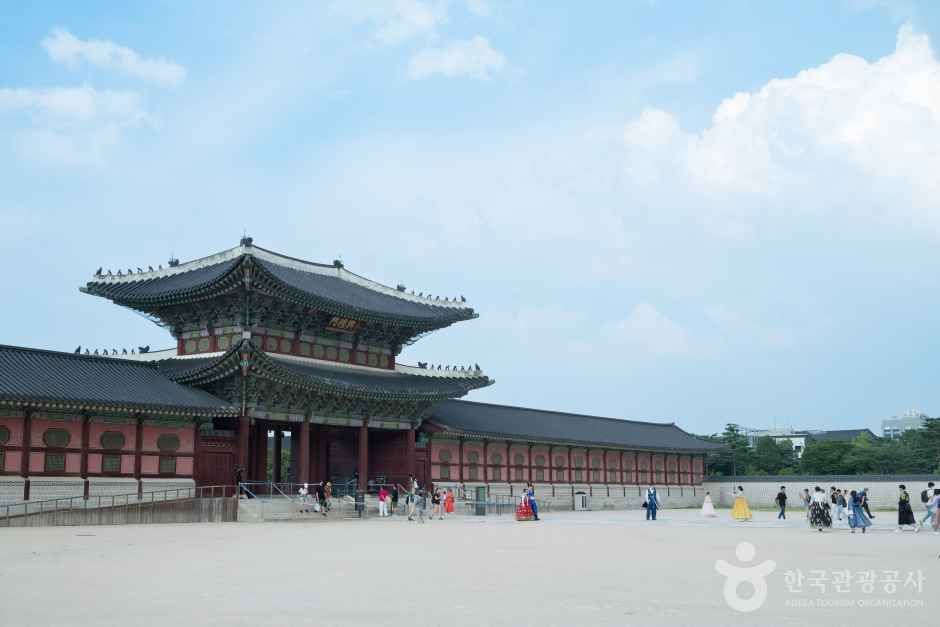
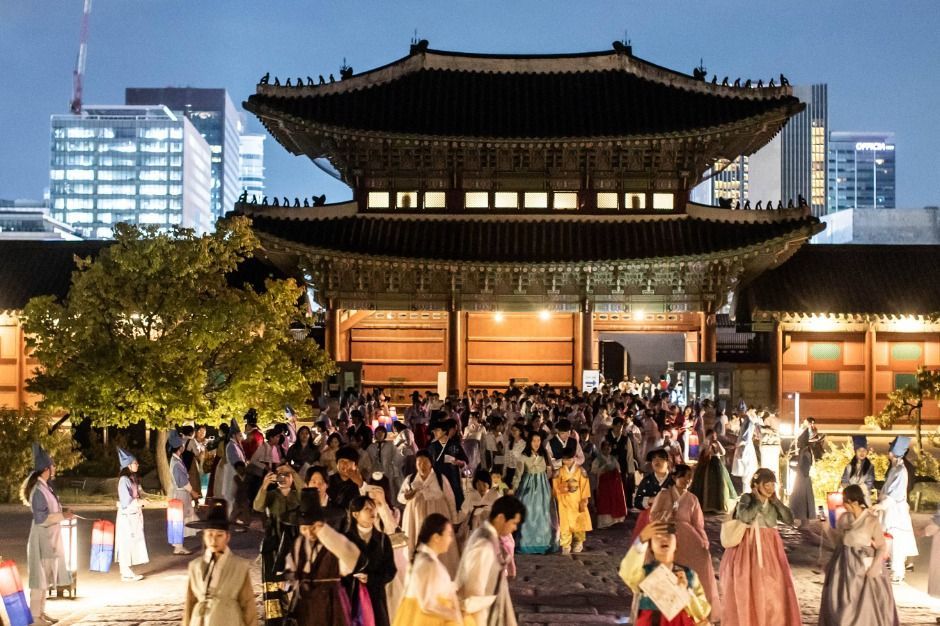
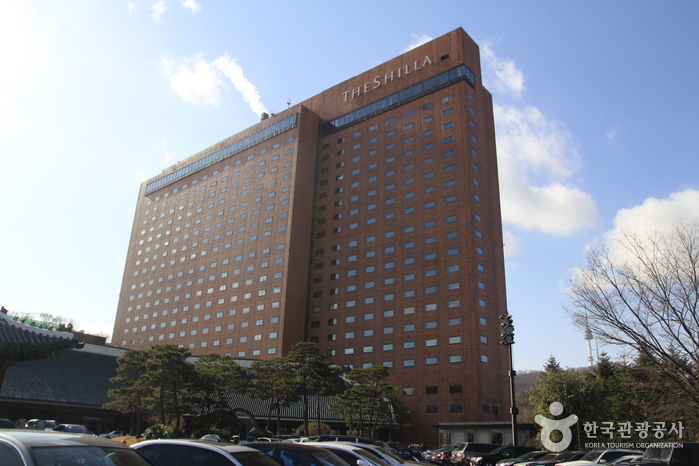

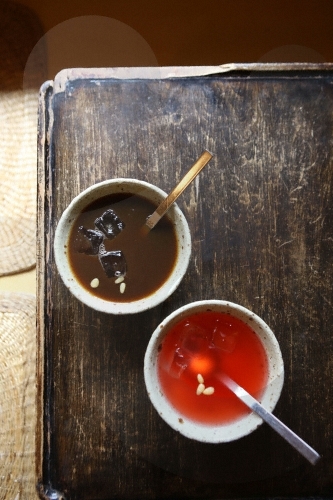
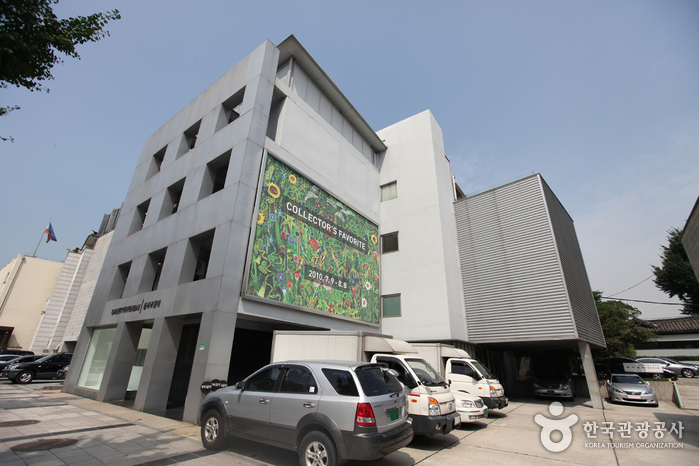
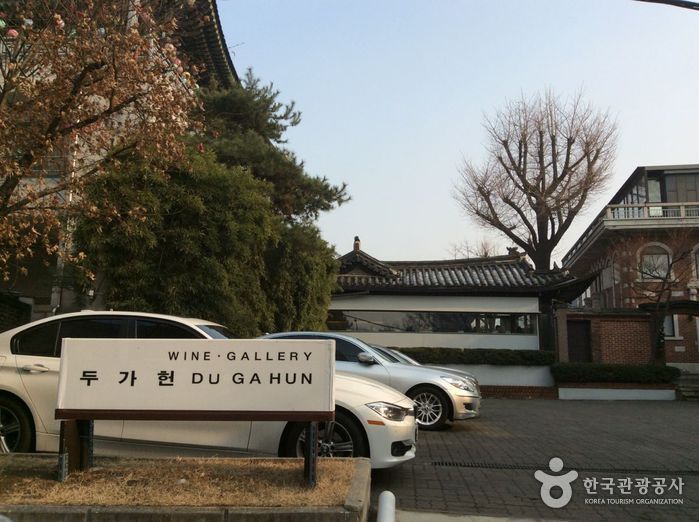
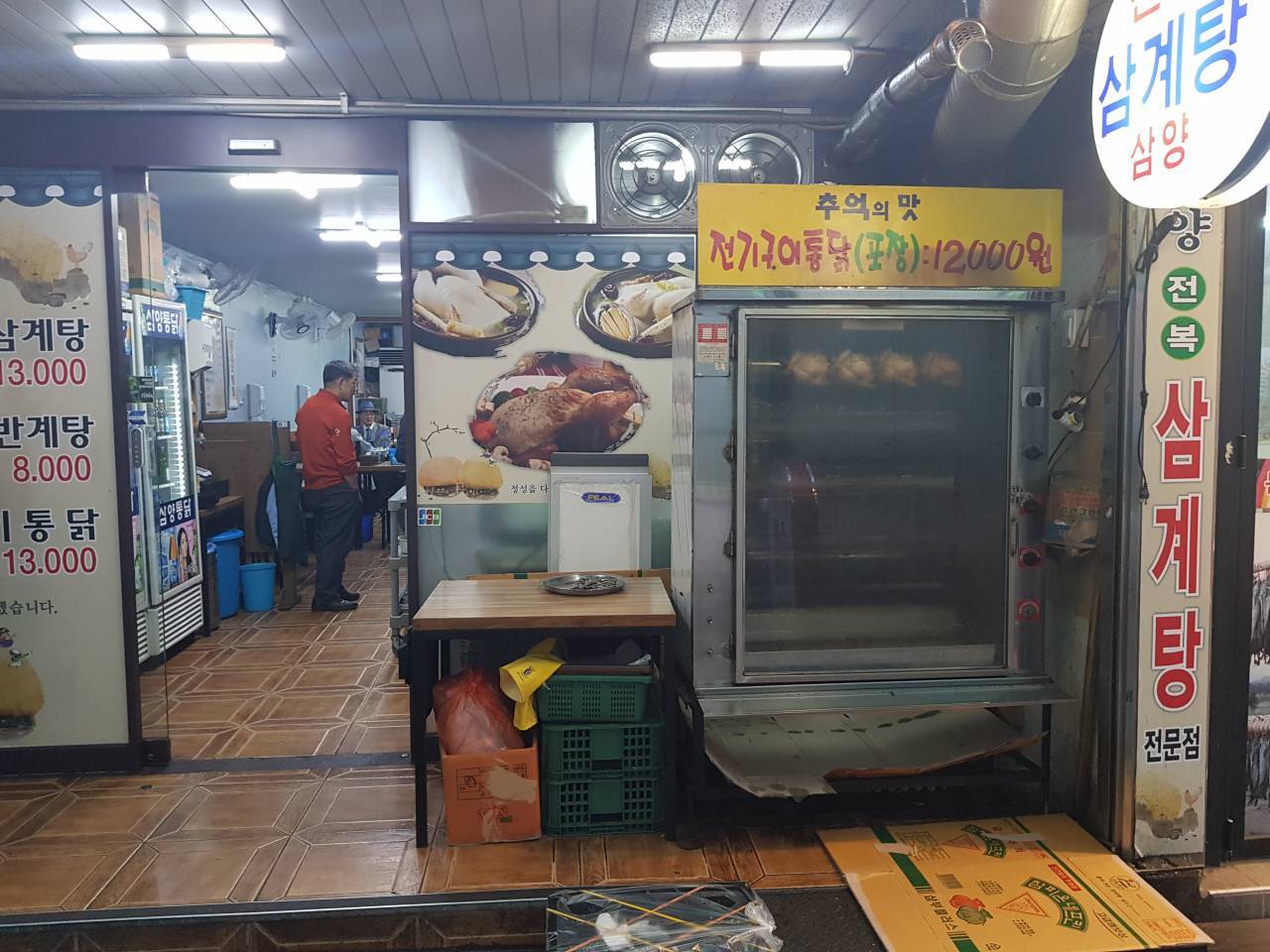
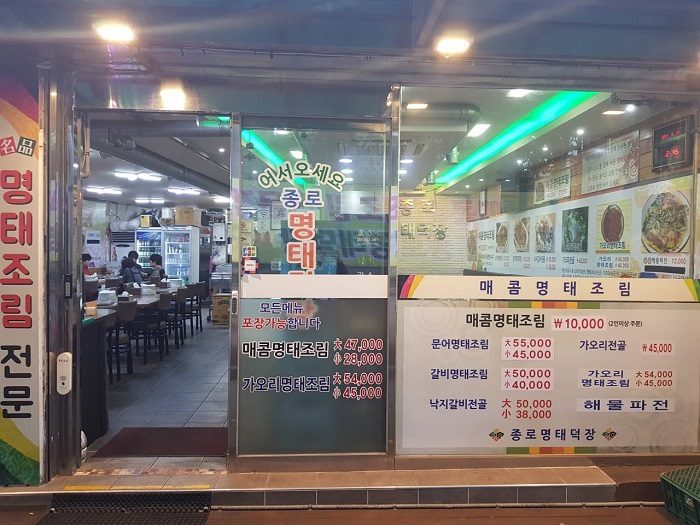
 Español
Español
 한국어
한국어 English
English 日本語
日本語 中文(简体)
中文(简体) Deutsch
Deutsch Français
Français Русский
Русский